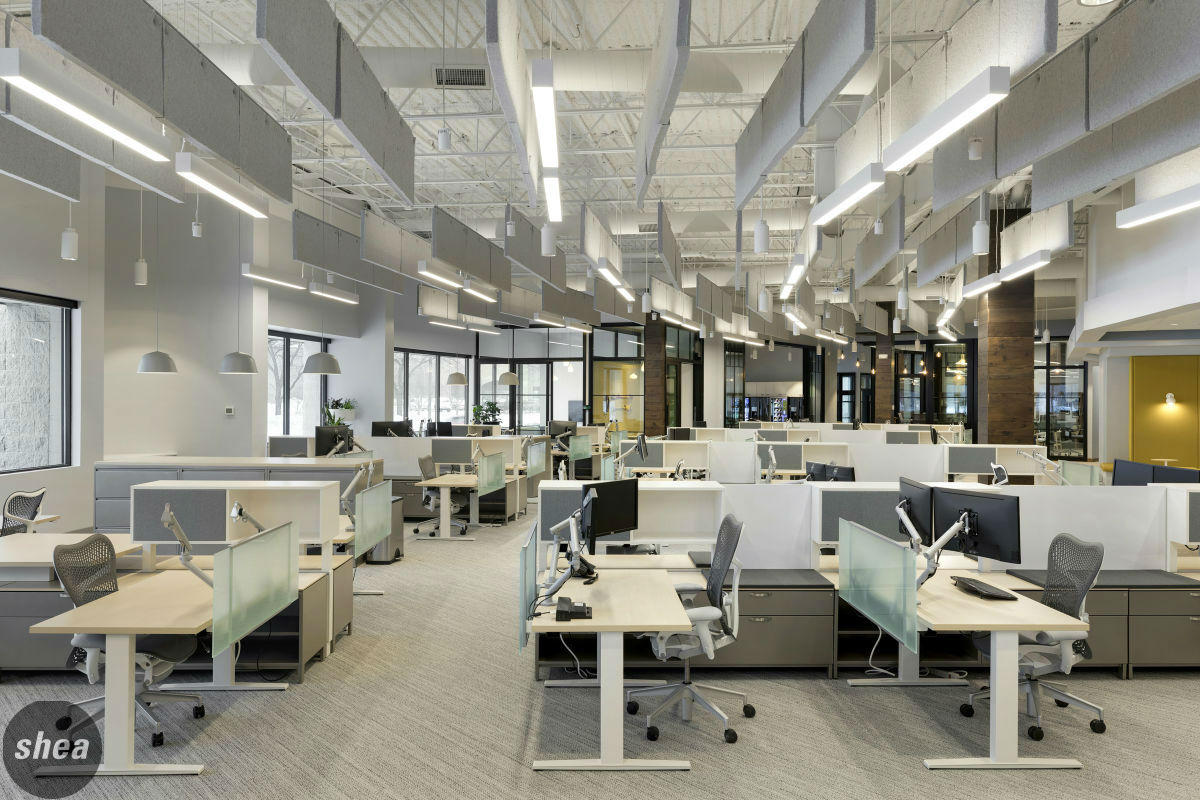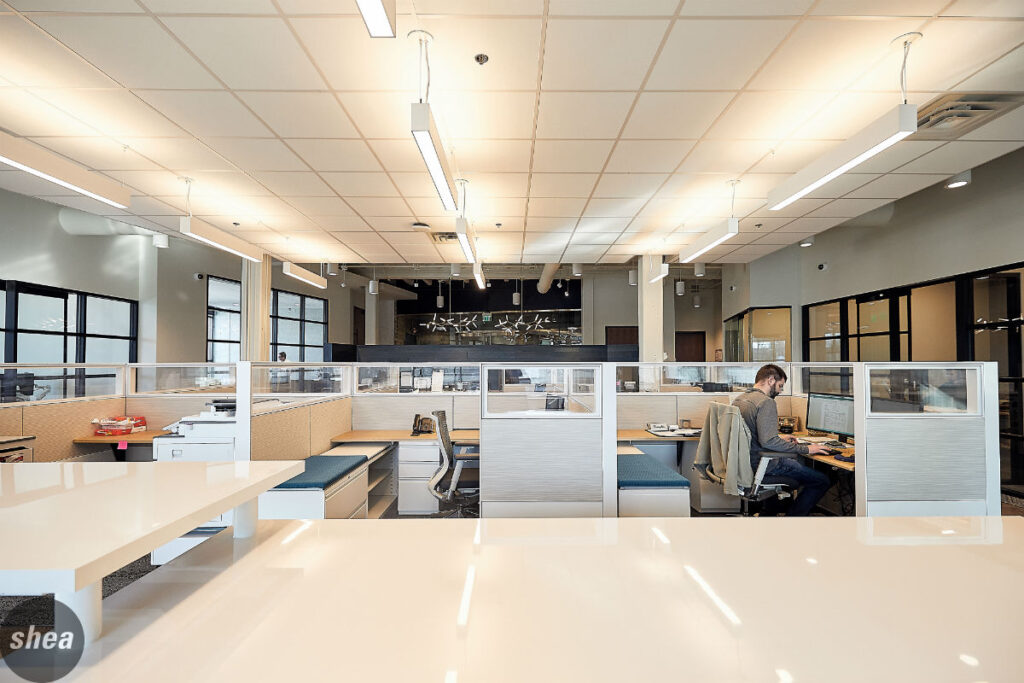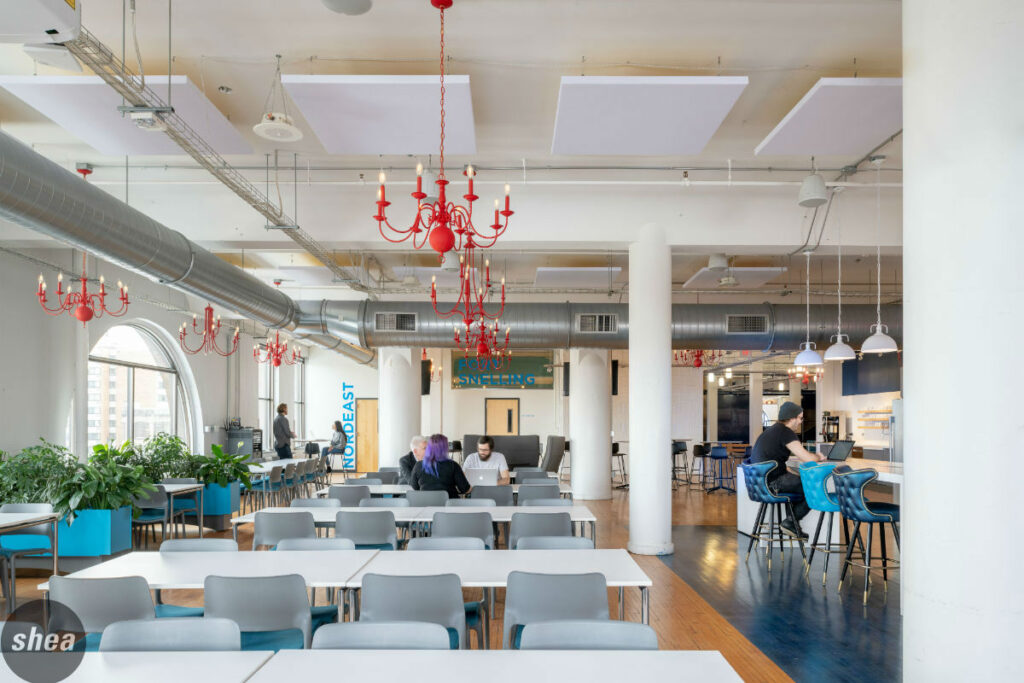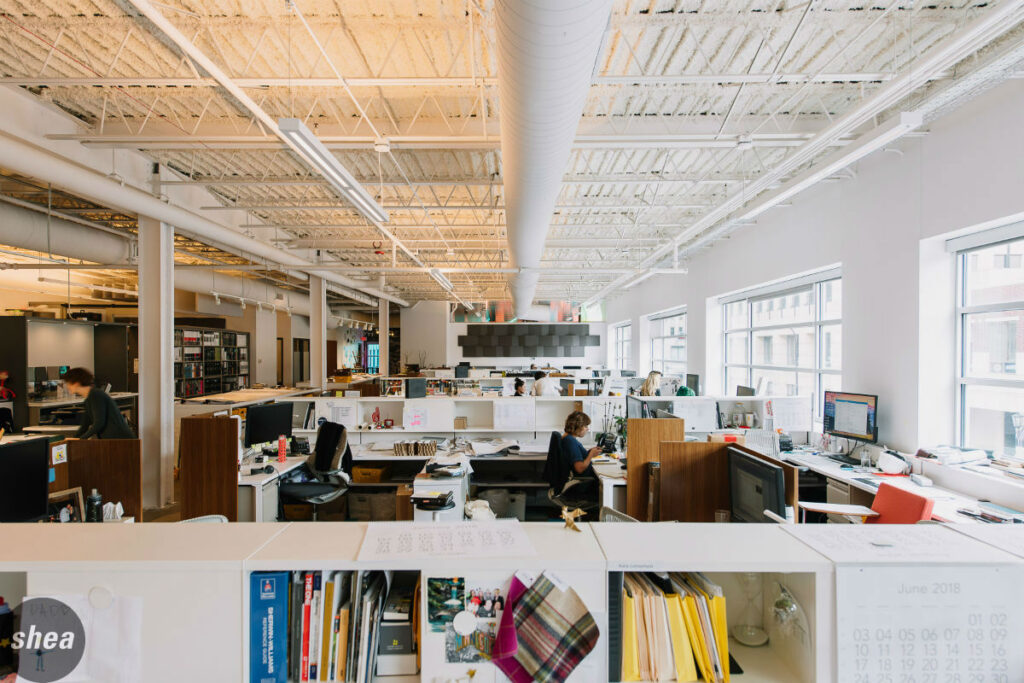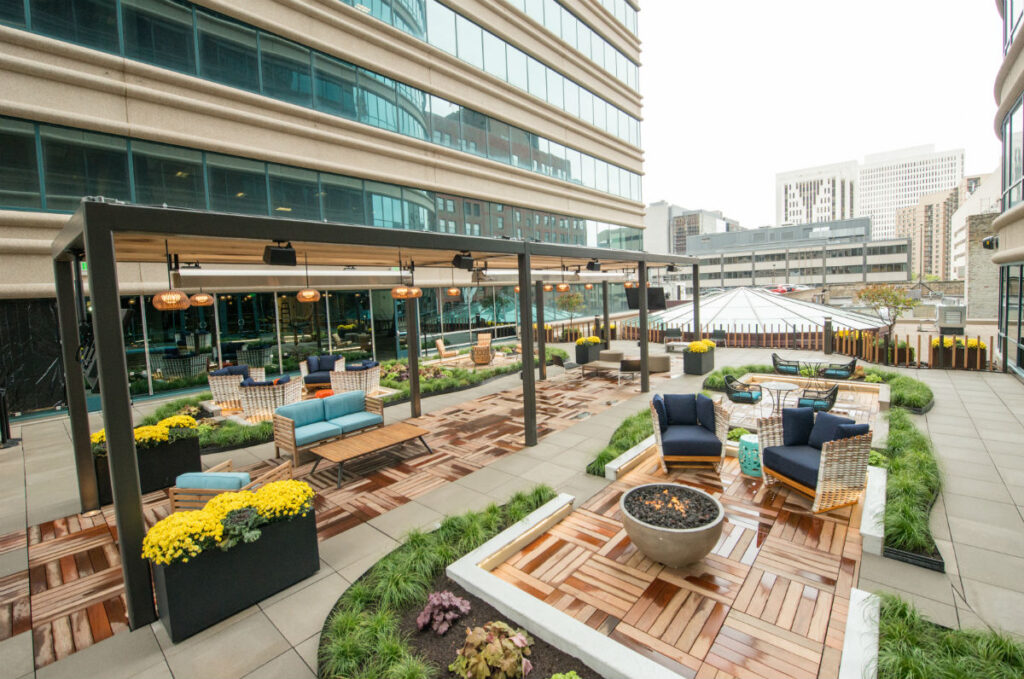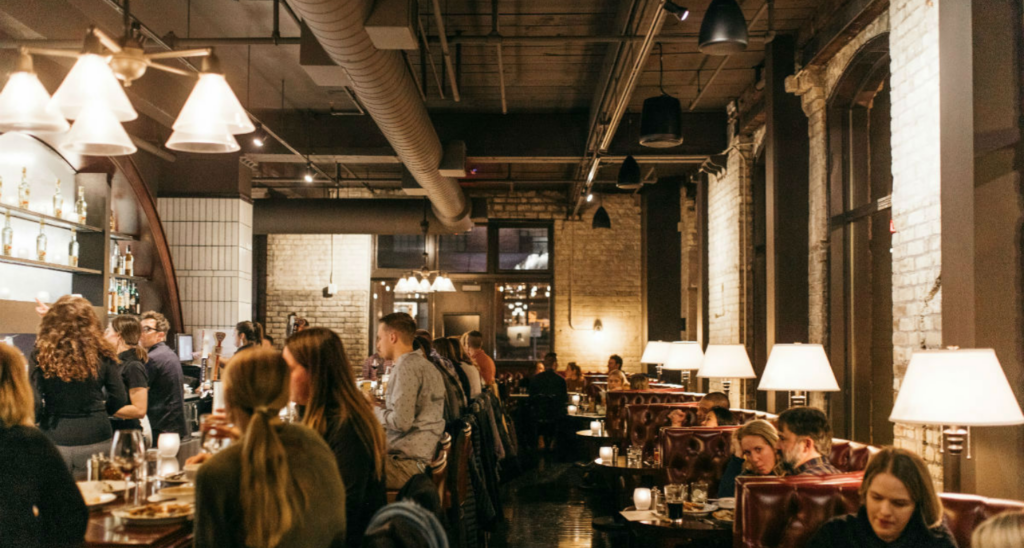For the past two decades, the open office has reigned at the top of workplace design—taking down the walls between employees, seating them directly next to each other to encourage easy collaboration, and removing any vestiges of private offices and spaces. Innovative, energetic, and democratic in theory, but in practice? Not so much.
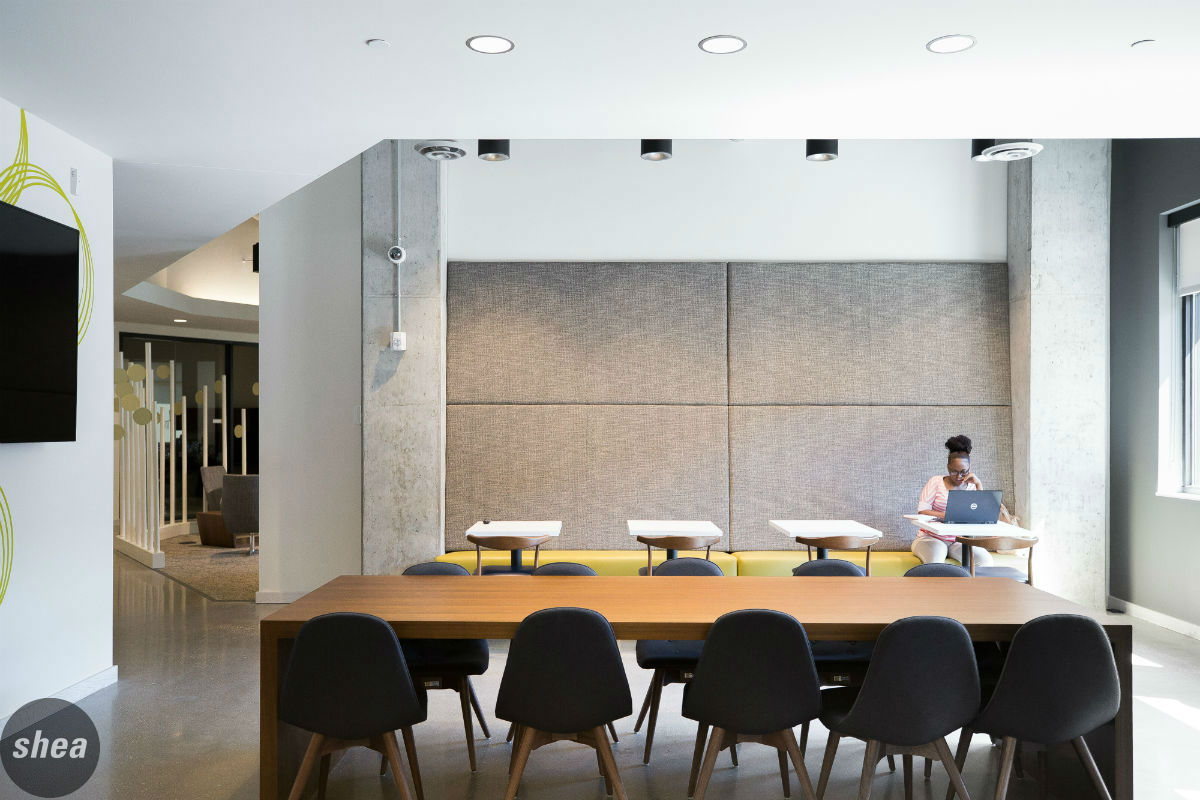 As the number of open workspaces in the United States has grown dramatically in the new millennium, with tech companies and ad agencies leading the way, employees’ distaste for open-office plans has risen in tandem. Recent studies have shown that fully open offices lead to decreased productivity, more distractions, and—paradoxically—less face-to-face interaction and collaboration between workers.
As the number of open workspaces in the United States has grown dramatically in the new millennium, with tech companies and ad agencies leading the way, employees’ distaste for open-office plans has risen in tandem. Recent studies have shown that fully open offices lead to decreased productivity, more distractions, and—paradoxically—less face-to-face interaction and collaboration between workers.
Enter: Shea.
We understand that every company is different, and we approach workplace design with that particular client in mind. It’s not about one-size-fits-all solutions or trends; a company’s needs are dependent on its people and the work that they do, which is why we talk to and survey employees as well as leadership to better understand what will make a workspace work for them. Collaborative areas are smart and useful, but they need to be employed judiciously, with an understanding that private and individual workspace is still important in an office today.
Create quiet spots for employees
First, the notion of a completely open office is simply not sustainable. There are always private calls to be made and heads-down work to be done. Furthermore, many employees like having a space to call their own. It’s about creating a balance between the individual and collaborative—and “balance” means not neglecting the individual side of things.
At the Riverland Bank metro-area office, individual employee space is imperative for confidentiality reasons. Shea created spacious workstations with plenty of room for workers to spread out, with sleek walls for privacy but glass paneling at the top to create an open feel. Small meeting rooms are ideal for private meetings between team members or with clients: Finished with cozy Oriental rugs and soft furnishings, they have a residential scale that feels welcoming, while operable glass walls allow for optional privacy while allowing in natural light and transparency.
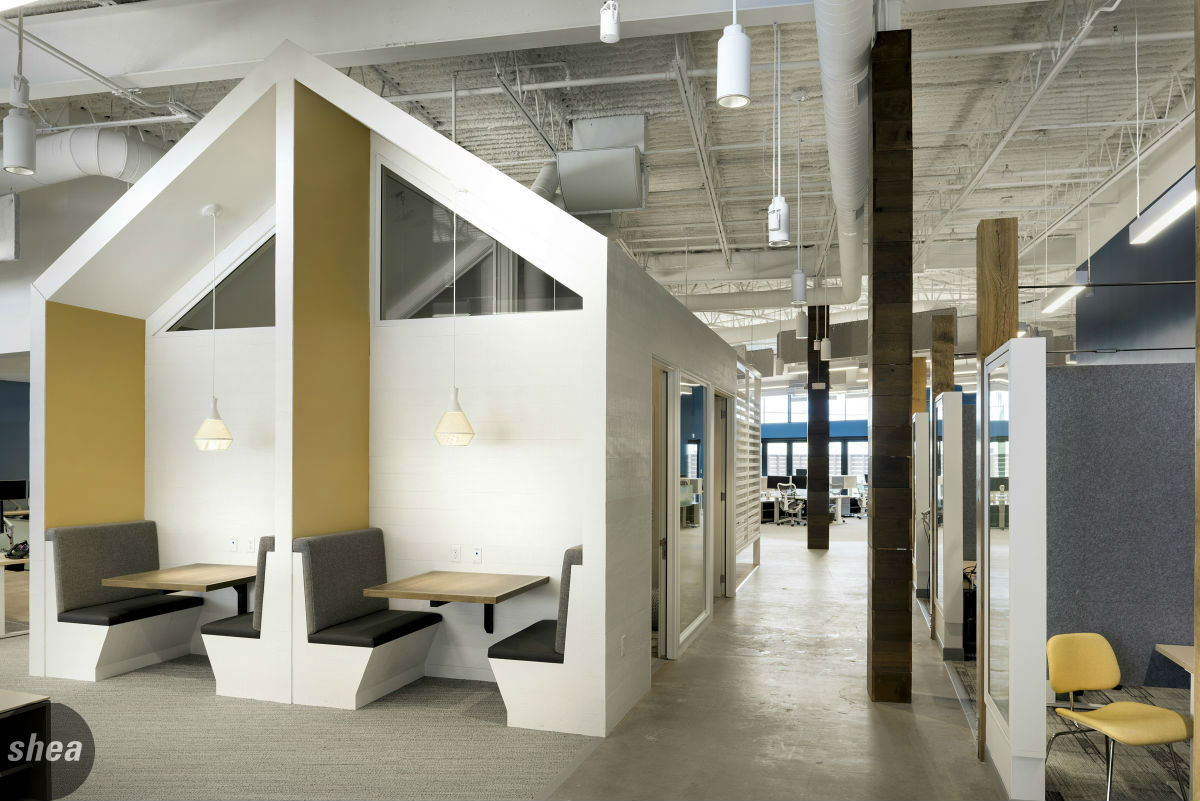 The Marvin Windows Eagan office was designed after extensive discussion and data-collecting from employees, and a “me and we” mentality was created to fill the different spaces. For Marvin, this meant designing roughly 70% of the office as “me” space—individual workstations, private offices, and a variety of individual spaces incorporated throughout the rest of the space—and 30% collaborative areas. By making it our business to understand the work that Marvin does and the way they do it, Shea was able to create a space that gives the company exactly what it needs for day-to-day operations.
The Marvin Windows Eagan office was designed after extensive discussion and data-collecting from employees, and a “me and we” mentality was created to fill the different spaces. For Marvin, this meant designing roughly 70% of the office as “me” space—individual workstations, private offices, and a variety of individual spaces incorporated throughout the rest of the space—and 30% collaborative areas. By making it our business to understand the work that Marvin does and the way they do it, Shea was able to create a space that gives the company exactly what it needs for day-to-day operations.
Make common areas that encourage productivity and collaboration
Open-office culture has long been a standing point of the advertising and media industries, where brainstorming and collaboration can lead to the next great pitch or idea. And as working in groups has become more common in other industries, collaborative space in an office has become even more important. Open offices have been found to create a surprising culture of less face-to-face collaboration—when it’s intentional for employees to meet in a space that’s been designed specifically for them to brainstorm and work together, it’s a much more effective use of group areas.
One key to making this system work is providing a variety of collaborative spaces. At Colle McVoy, a top Minneapolis creative agency, Shea created a handful of areas where it’s easy for workers to gather for an informal brainstorming session or a more structured meeting, starting with the wow-factor office lobby, featuring a neon fireplace, artsy chandelier, and seating for employees and clients. The new kitchen and lounge is another key spot to come together, with bar-style seating and long tables providing an additional workspace for individuals or groups.
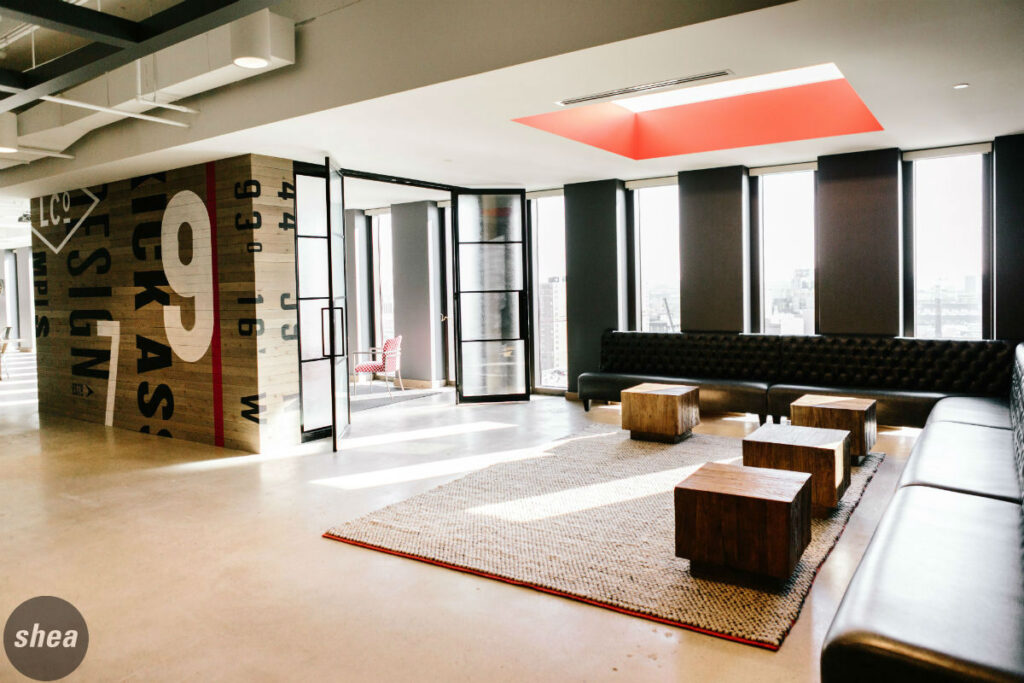
Little, a Minneapolis advertising agency, also benefits from a variety of additional workspaces. Private desks and offices have a strong presence, but an open central meeting room, inviting banquettes in the lobby, and islands and pinup boards spread throughout the desk spaces are used for impromptu collaboration. And the kitchen and lounge features not only counter seating perfect for individuals to settle in with a project, but also a long communal table where teams can spread out their work and meet in larger groups. And at Steven Scott, the kitchen multitasks as meeting room, work area, and celebration space.
Use technology to help with office woes
A top employee complaint about working in an open office? They just get too loud. Without the proper acoustical support (critical to remember in any workplace design), a large, open room with a lot of hard surfaces is a noisy nightmare. Breaking an office into zones and including some enclosed spaces that are truly quiet for privacy are both helpful solutions, and technology can step in to lend a hand as well.
At Riverland Bank, a cloud feature in the center of the office is a bold way to include noise-absorbing acoustical panels without sacrificing style. The Marvin Windows office includes not only hanging acoustic panels that lend it a sleek, modern look, but also multi-purpose speakers that can be used for music or intercom announcements—for most of the workday, white noise is pumped through to help workers focus. And in the Shea workspace, the high ceilings are covered in insulation material crafted from recycled T-shirts to soak up extraneous sounds.
Build “escape spaces” in office towers
Not every individual office is designed so thoughtfully, and often, office complexes are filled with workplaces that don’t suit their employees. So when Shea is tapped to reimagine an office tower, we’re sure to include tenant spaces that allow for both collaboration and for peace and quiet when employees need somewhere outside of the office to go.
At Fifth Street Towers in Minneapolis, a tenant amenity floor with an expansive lounge gives the opportunity for small groups to meet outside of the office, but also space for individuals to settle in and work without the everyday distractions of their own offices. And the outdoor roofdeck is a true respite, allowing for a restorative breath of fresh air and natural light. The atrium at Bloomington’s Normandale Lakes Office Park features supportive banquettes, chairs, and a long library table with power ports, ideal for getting heads-down work done. And large leather chairs with curved edges on the skyway level have an element of privacy that makes them the perfect stopping spot to make a phone call or focus on a project.
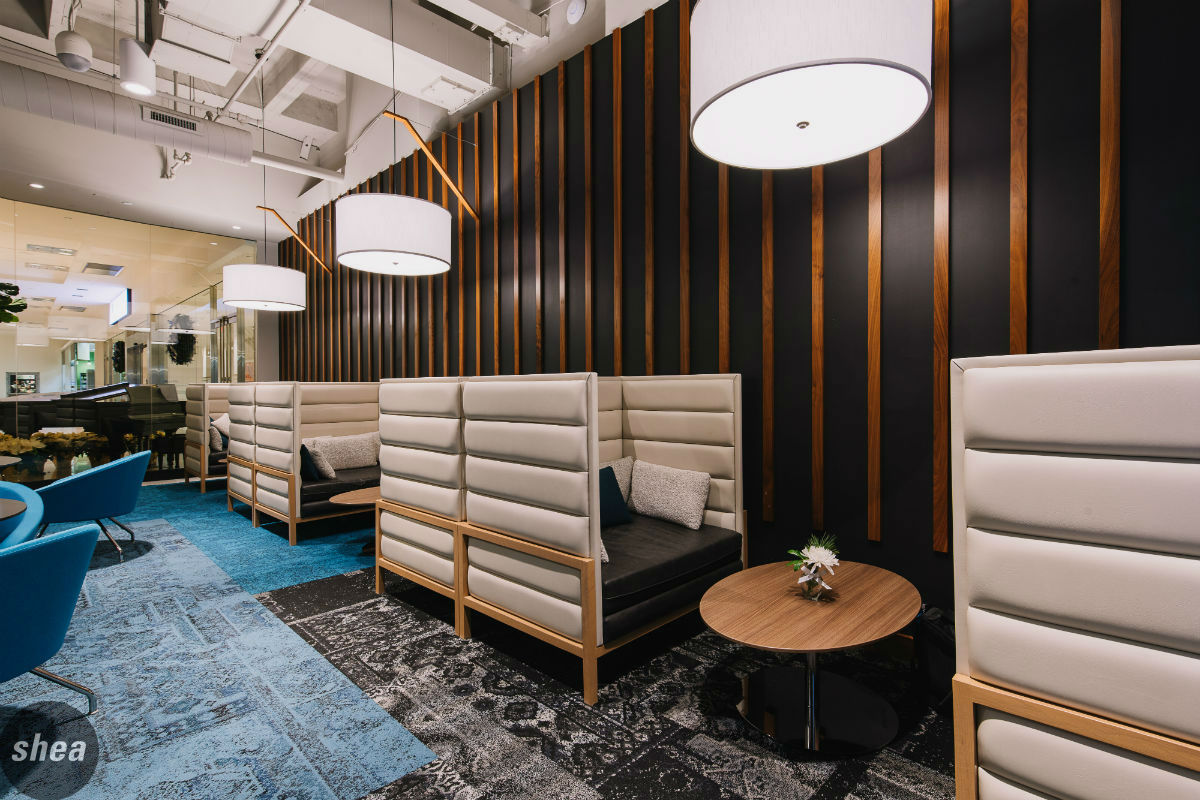 At 60 South Sixth, a first-floor tenant lounge is designed with both work and play in mind. A bar and pool table sit at its heart, encouraging a break from a busy workday or relaxing spot to stop at its end. On the opposite side of the lounge, carefully selected furnishings make it a great spot to settle in with work: Spacious tables give room to spread out, while supportive chairs with high backs and sides give privacy to workers looking for alone time.
At 60 South Sixth, a first-floor tenant lounge is designed with both work and play in mind. A bar and pool table sit at its heart, encouraging a break from a busy workday or relaxing spot to stop at its end. On the opposite side of the lounge, carefully selected furnishings make it a great spot to settle in with work: Spacious tables give room to spread out, while supportive chairs with high backs and sides give privacy to workers looking for alone time.
Open offices can be a great idea for the right company and culture—it’s the execution that could use some work. By carefully considering the needs of each client and incorporating the elements that make their workplaces work for them, Shea is able to create offices that engage employees and inspire them to love where they work, every day.


